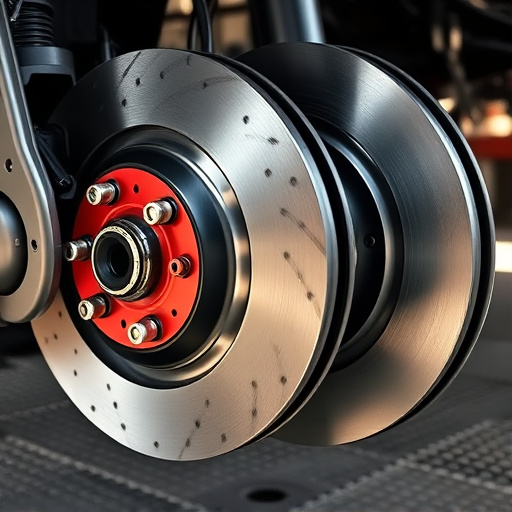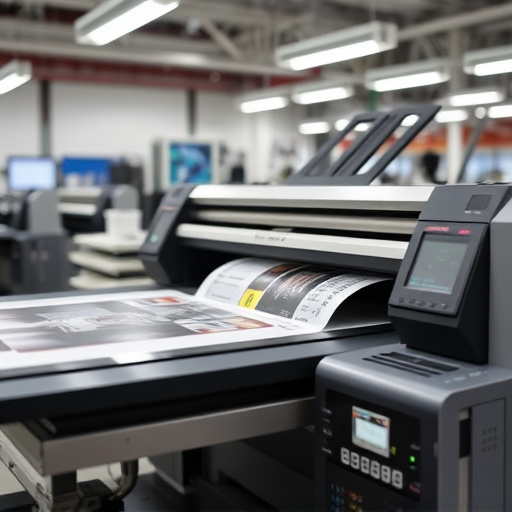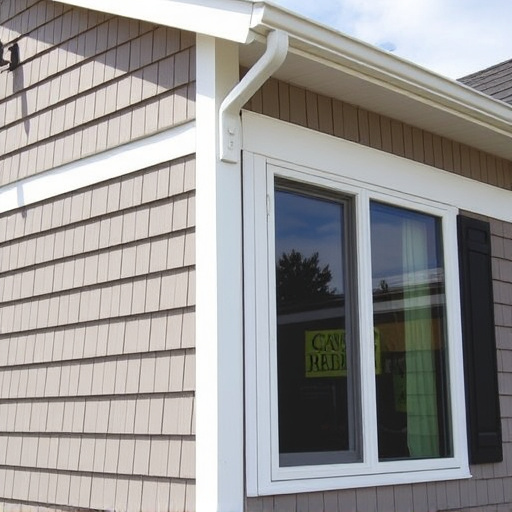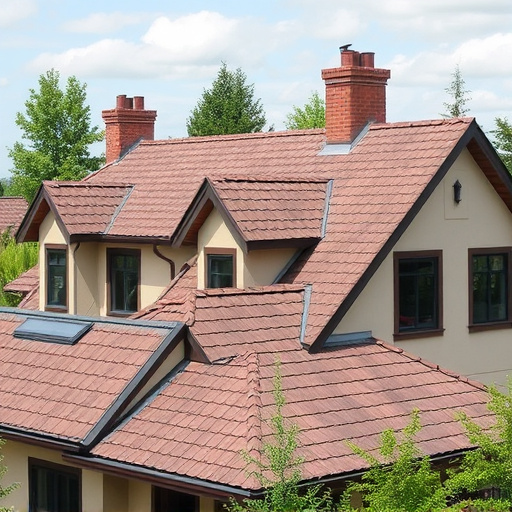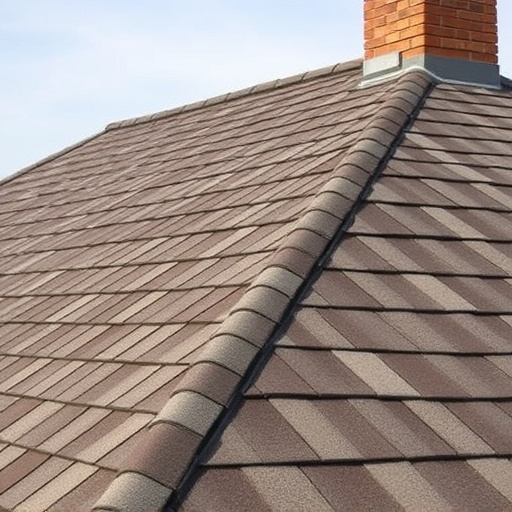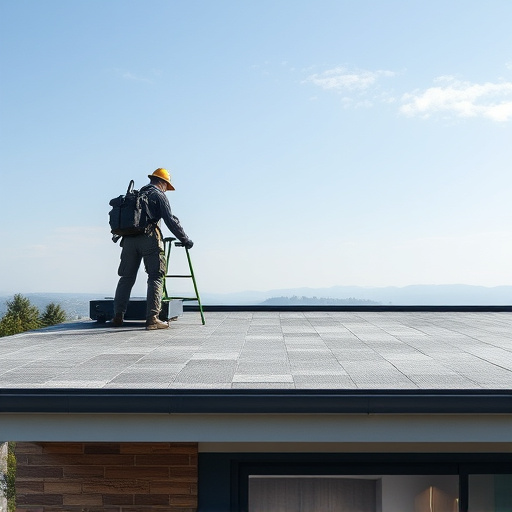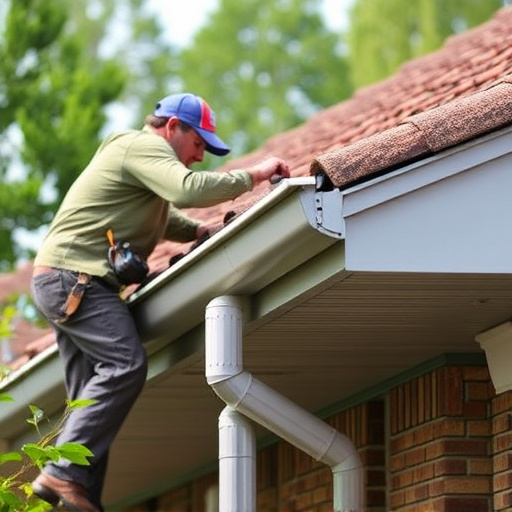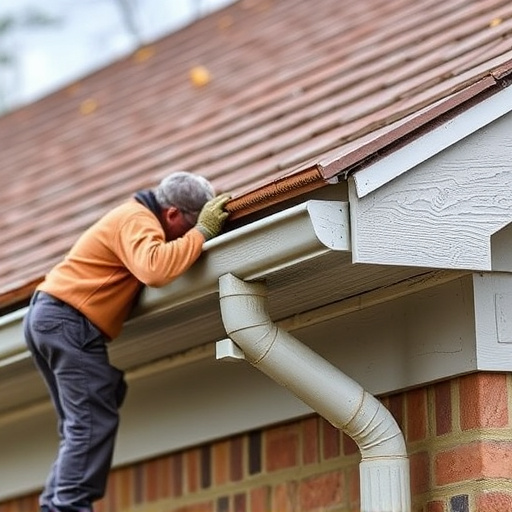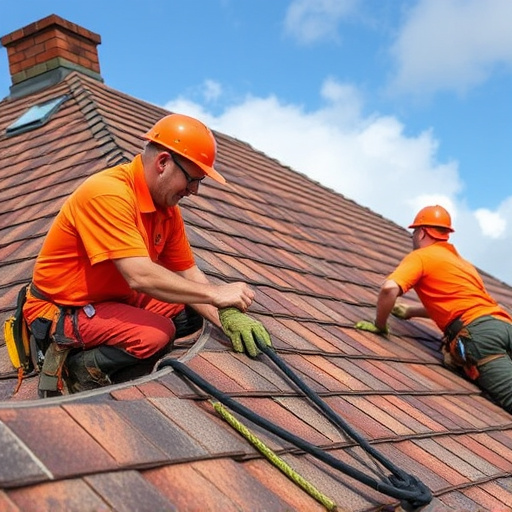Assess roof damage through visual inspections for cracks, missing shingles, discoloration (asphalt) or structural issues like sagging. For asphalt roofs, replace damaged shingles and use patches with sealants; metal roofs require rust treatment and panel replacement. Regular maintenance includes cleaning, inspecting for wear, and re-sealing to extend roof lifespan. Commercial siding needs periodic checks for loose panels and gap sealing for insulation. Proactive roof consulting ensures long-lasting repairs and protection.
Roof repairs can range from simple fixes to complex renovations, especially with different materials like asphalt and metal. This guide delves into the best practices for addressing various roofing issues, focusing on asphalt and metal roofs. We’ll walk you through assessing damage, understanding specific repair techniques for each material, and offering longevity tips to maintain and restore your roof post-repair. By following these methods, you can ensure a robust and durable roof system.
- Assessing Damage: Identifying Asphalt and Metal Roof Issues
- Repair Techniques: Effective Solutions for Each Material
- Longevity Tips: Maintaining and Restoring Roofs Post-Repair
Assessing Damage: Identifying Asphalt and Metal Roof Issues
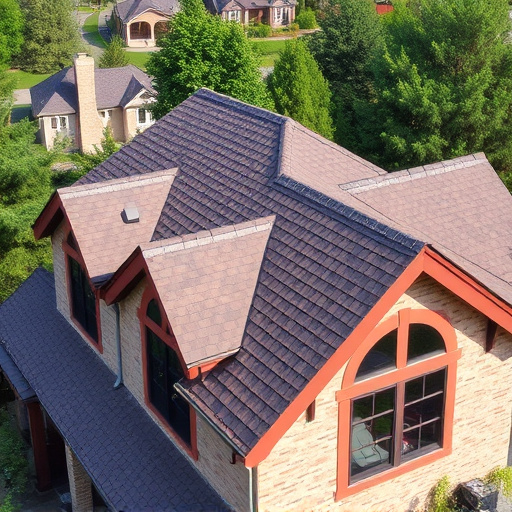
Assessing Damage is a crucial first step in any roof repair process. For asphalt roofs, look out for cracks, missing or damaged shingles, and signs of leaks, like discolored or peeling paint. Regular inspection can help catch issues early, preventing further damage from weather exposure or storm events. When it comes to metal roofs, check for dents, rust spots, and loose or broken panels. Storm damage repair is a common need, especially in regions prone to harsh weather. Home exterior services professionals can assist in identifying these problems accurately.
The visual inspection should also consider the overall structure of both types of roofs. Any signs of sagging, misalignment, or uneven surfaces might indicate structural damage that requires immediate attention. Prompt identification of these issues is key to ensuring longevity and stability of your roof, thus saving you from costly roof replacement in the future.
Repair Techniques: Effective Solutions for Each Material
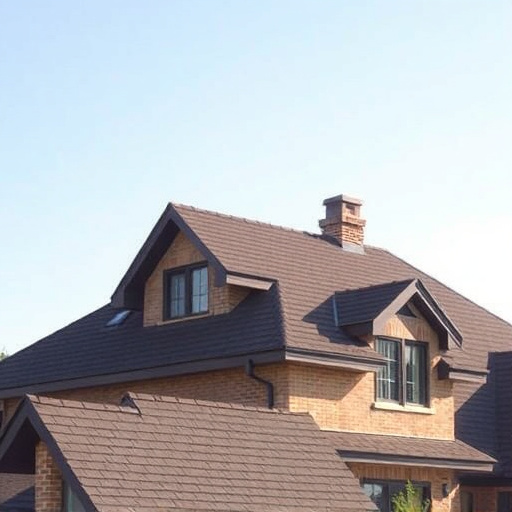
When it comes to roof repair, the techniques vary greatly depending on whether you’re dealing with an asphalt or metal roof. For asphalt roofs, one of the most common and effective repair methods involves replacing damaged or missing shingles. This can be a DIY project for minor repairs, but for larger damages, professional roofing services are recommended. Asphalts can be patched using specialty sealants and coatings, which not only fix leaks but also extend the life of the roof.
For metal roofs, repair techniques differ slightly. Rust is a common issue, so regular inspections are crucial. Minor rust spots can be treated with specialized metal roofing repairs kits, while larger issues might require replacing entire sections. Professional roofing and siding contractors often use high-quality screws to secure the panels, ensuring longevity. Additionally, applying protective coatings can shield metal roofs from corrosive elements, making them a durable and low-maintenance option for both residential and commercial properties.
Longevity Tips: Maintaining and Restoring Roofs Post-Repair
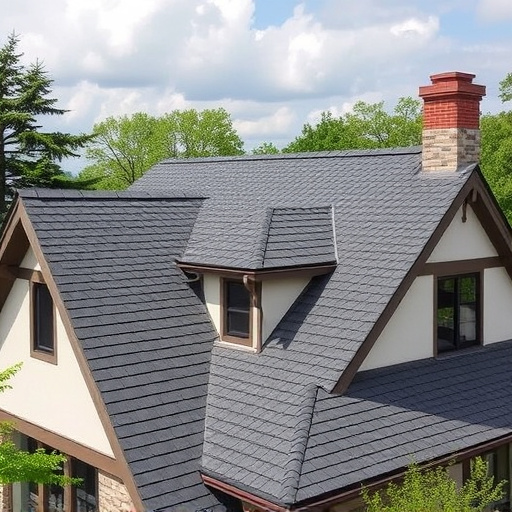
After completing roof repair on asphalt or metal roofs, implementing proper maintenance practices is crucial to extend their lifespan. Regular cleaning and inspection are essential steps to prevent future damage and ensure your roof remains in top condition. Start by clearing debris, such as leaves and branches, from the roof’s surface to avoid water buildup and potential rot. Use a soft brush or vacuum for thorough yet gentle cleaning.
Additionally, examining the roof for any signs of wear and tear, including missing shingles or damaged metal panels, is vital. Addressing these issues promptly through professional roofing solutions or DIY repairs can prevent more extensive damage. Consider a protective coating or sealing for your asphalt roof to shield it from harsh weather conditions and UV rays, enhancing its durability. For commercial siding, regular maintenance includes checking for loose panels and sealing any gaps to maintain optimal insulation and protect against moisture intrusion. Engaging in proactive roof consulting will safeguard your investment and ensure long-lasting roofing solutions.
When it comes to roof repair, whether you’re dealing with asphalt or metal, understanding the unique challenges of each material is key. By effectively assessing damage, employing suitable repair techniques, and prioritizing maintenance, you can significantly extend the lifespan of your roofing system. Remember, prompt action on minor issues can prevent costly replacements down the line, ensuring a secure and durable shelter over your head. So, whether it’s fixing cracks in asphalt or reinforcing metal panels, choosing the right methods will make all the difference in the long run.
